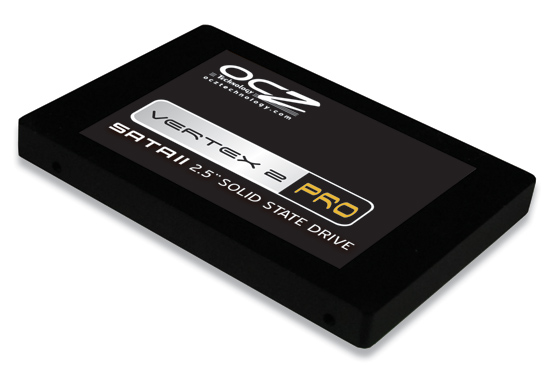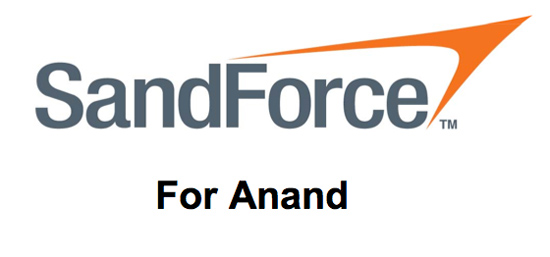OCZ's Vertex 2 Pro Preview: The Fastest MLC SSD We've Ever Tested
by Anand Lal Shimpi on December 31, 2009 12:00 AM EST- Posted in
- Storage
One thing AMD has taught me is that you can never beat Intel at its own game. Simply trying to do what Intel does will leave you confined to whatever low margin market Intel deems too unattractive to pursue. It’s exactly why AMD’s most successful CPU architectures are those that implement features that Intel doesn’t have today, but perhaps will have in a few years. Competing isn’t enough, you must innovate. Trying to approach the same problem in the same way but somehow do it better doesn’t work well when your competition makes $9B a quarter.
We saw this in the SSD space as well. In the year since Intel’s X25-M arrived, the best we’ve seen is a controller that can sort-of do what Intel’s can just at a cheaper price. Even then, the cost savings aren’t that great because Intel gets great NAND pricing. We need companies like Indilinx to put cost pressure on Intel, but we also need the equivalent of an AMD. A company that can put technological pressure on Intel.

That company, at least today, is SandForce. And its disciple? OCZ. Yep, they’re back.
Why I Hate New SSDs
I’ll admit, I haven’t really been looking forward to this day. Around the time when OCZ and Indilinx finally got their controller and firmware to acceptable levels, OCZ CMO Alex Mei dropped a bombshell on me - OCZ’s Vertex 2 would use a new controller by a company I’d never heard of. Great.
You may remember my back and forth with OCZ CEO Ryan Petersen about the first incarnation of the Vertex drive before it was released. Needless to say, what I wrote in the SSD Anthology was an abridged (and nicer) version of the back and forth that went on in the months prior to that product launch. After the whole JMicron fiasco, I don’t trust these SSD makers or controller manufacturers to deliver products that are actually good.

Aw, sweet. You'd never hurt me would you?
Which means that I’ve got to approach every new drive and every new controller with the assumption that it’s either going to somehow suck, or lose your data. And I need to figure out how. Synonyms for daunting should be popping into your heads now.
Ultimately, the task of putting these drives to the test falls on the heads of you all - the early adopters. It’s only after we collectively put these drives through hundreds and thousands of hours of real world usage that we can determine whether or not they’re sponge-worthy. Even Intel managed to screw up two firmware releases and they do more in-house validation than any company I’ve ever worked with. The bugs of course never appeared in my testing, but only in the field in the hands of paying customers. I hate that it has to be this way, but we live in the wild west of solid state storage. It’ll be a while before you can embrace any new product with confidence.
And it only gets more complicated from here on out. The old JMicron drives were easy to cast aside. They behaved like jerks when you tried to use them. Now the true difference between SSDs rears its head after months or years of use.
I say that because unlike my first experience with OCZ’s Vertex, the Vertex 2 did not disappoint. Or to put it more directly: it’s the first drive I’ve seen that’s actually better than Intel’s X25-M G2.
If you haven't read any of our previous SSD articles, I'd suggest brushing up on The Relapse before moving on. The background will help.










100 Comments
View All Comments
Holly - Friday, January 1, 2010 - link
Well, you can patent implementation and technology, but not the idea itself. (At least that's what my boss was trying to explain me). So, in case this idea seems worthy enough other manufacturers will come with their own MySuperStoringTechnology (c).Personaly I think any improvement (even if it comes out to be dead end) is worth it in global scale and this tech seems very interesting to me.
I only have some worries about using cheaper NAND chips... Taking cheap USB flash they tend to go nuts in about 6-12 months of usage (well, I am stressing them quite a bit...) Putting them together with the best controller seems to me a bit like disbalancing things. Definitely not for servers/enthusiasts (who want the best quality for good reasons) and still too expensive for pple earning their paychecks
Holly - Friday, January 1, 2010 - link
P.S. Happy New Yearyacoub - Thursday, December 31, 2009 - link
I don't know that I want lower-quality Flash memory in my SSDs. I think I'd rather have both a better chip and high quality memory. But you know corners will be cut somewhere to keep the prices affordable.frontliner - Thursday, December 31, 2009 - link
Page 10 talks about Random Write in MB/s and you're talking IOPS:At 11K IOPS in my desktop 4KB random write test, the Vertex 2 Pro is 20% faster than Intel’s X25-M G2. Looking at it another way, the Vertex 2 Pro has 2.3x the 4KB random write performance of today’s OCZ Vertex Turbo.
&
Random read performance is quite good at 13K IOPS, but a little lower than Intel’s X25-M G2.
Anand Lal Shimpi - Thursday, December 31, 2009 - link
woops! you're right, I decided to go with the MB/s graphs at the last minute but wrote the text based on the IOPS results. Fixed! :)Take care,
Anand
Makaveli - Thursday, December 31, 2009 - link
My guess is intel will release another firmware to increase the write speed on the G2 drives. As Q4 2010 is quite a long wait for a refresh. So new firmware with increase write speed and a price drop should still keep them in the driving seat.Kudos to OCZ for the constant shove in the back to intel tho.
mikesown - Thursday, December 31, 2009 - link
Hi Anand,Great article! Along the subject of Intel's monopoly bullying, I was curious if you had any information about Micron manufacturing their own C300 SSDs with (very nice, it seems) Marvell controllers(see http://www.micronblogs.com/category/ssd-concepts/)">http://www.micronblogs.com/category/ssd-concepts/). I know Micron and Intel manufactured NAND jointly through their IM Flash Technologies venture, so it seems a little bit strange that Micron would manufacture competing SSDs while in a partnership with Intel. Did Intel and Micron part ways for good?
Thanks,
Mike
efficientD - Thursday, December 31, 2009 - link
As an employee of Micron, I can say that Intel and Micron have not parted ways, but rather only had the agreement for the actual flash memory and not all of the other parts of an SSD (controller, dtc.) We are still very much in cooperation on what was agreed upon in the first place. You will notice that the OCZ in this article is Micron, and not from IM flash (the Intel/Micron joint venture). If you crack open an Intel drive, however, you will nearly exclusively find IM Flash chips along with Micron DRAM, the first gen didn't even have Micron DRAM. Hope this clarifies some things.Doormat - Thursday, December 31, 2009 - link
I'm disappointed in the lack of SATA 6Gb/s support, but a lot of that is product timing (its only now showing up in add-on chips, and controllers in late 2010/early 2011). You really wonder what the speeds are on an unbridled SF-based drive.Jenoin - Thursday, December 31, 2009 - link
"SandForce states that a full install of Windows 7 + Office 2007 results in 25GB of writes to the host, yet only 11GB of writes are passed on to the drive. In other words, 25GBs of files are written and available on the SSD, but only 11GB of flash is actually occupied. Clearly it’s not bit-for-bit data storage.""What SF appears to be doing is some form of real-time compression on data sent to the drive."
Based on what they said (and what they didn't say) I have to disagree. It appears to me that they are comparing the write that is requested with the data already on the SSD and only writing to the bits that need changed thereby write amplification ~0.5. This would explain the high number of IOPS during your compressed file write test perhaps. That test would then be a mixed test of sequential and random writes giving you performance numbers in between the two other tests. Could you verify the actual disk usage with windows 7 and Office installed? If it indicates 11gb used then it is using some kind of compression but if it indicates the full size on the disk then it is using something similar to what I detailed. I just thought it interesting that Sandforce never said things would take up less space, (which would be a large selling point) they only said it would have to write about half as much supporting my theory.